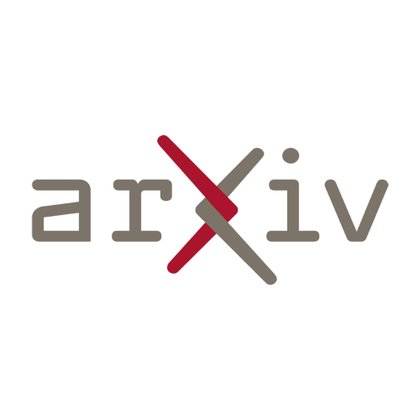
Ainaz Eftekhar
@ainaz_eftekhar
Followers
332
Following
379
Media
17
Statuses
40
Computer Science PhD @UW, Student Researcher @allen_ai
Joined September 2020
🎉 Excited to share that our paper “Convergent Functions, Divergent Forms” will be presented at NeurIPS 2025🤖 in San Diego! We present LOKI, a compute-efficient framework for co-evolving robot morphologies🦾 and control policies⚙️. LOKI discovers diverse, high-performing robot
1
7
12
🎥 Check out the website + paper here ⬇️ 🔗 https://t.co/GfD4KOt0Vp 🔗 https://t.co/plQCUmWwYN A huge thank-you to my amazing collaborators: Hyeonseong Jeon, @aaronwalsman, @KuoHaoZeng, Ali Farhadi, and @RanjayKrishna.
0
0
2
🧵7/7 Across downstream tasks — agility, stability, manipulation — LOKI shows superior adaptability at both the morphology and policy levels. Top 1–10 LOKI morphologies achieve up to 2× higher rewards than DERL on bump and push-box incline tasks 💪
1
0
0
🧵6/7 LOKI discovers a wide spectrum of locomotion behaviors maintaining both quality and diversity. Quadrupeds, bipeds, crab-like, cheetah, spinner, crawler, and more — while traditional methods collapse to a single type due to global selection pressure and premature convergence
1
0
0
🧵5/7 Results 📈 : LOKI is far more sample-efficient: - ~78% fewer simulation steps (20B → 4.6B) - 40% fewer training FLOPs per design - Explores ~780× more morphologies than prior evolution-based methods
1
0
0
🧵4/7 How it works: 1️⃣ LOKI clusters 500k morphologies in a learned latent space, grouping similar designs. 2️⃣ Each cluster trains a shared policy on a pool of elite designs, enabling efficient evaluation of new morphologies without retraining. 3️⃣ Morphologies and policies then
1
0
0
🧵3/7 We introduce LOKI (Locally Optimized Kinematic Instantiations) — an efficient framework for discovering diverse, high-performing morphologies that generalize to unseen tasks. Our key idea💡: reuse controllers + expand search efficiently through clustered co-evolution.
1
0
0
🧵2/7 Quality-Diversity (QD) algorithms help to avoid local optima by maintaining behavioral diversity — finding many distinct, high-performing solutions. But... diversity comes at the cost💸 of evaluating many more designs (using design-specific controllers).
1
0
0
🧵1/7 Brain–body co-design methods jointly optimize both control and design for a given task. They are typically framed as a bi-level optimization🧩: an outer loop searches for morphologies (using evolutionary strategies), while an inner loop trains a control policy for each
1
0
0
🤖✨ What if models that take action in the physical world could think through your instructions? Meet MolmoAct, our new fully open Action Reasoning Model (ARM) that does just that. 🧵
15
82
341
📢We're organizing a workshop at #RSS2025 on Mobile Manipulation—bringing together researchers and practitioners pushing the frontier of MoMA. Hope to see you in LA!
📢Excited to announce our #RSS2025 workshop: Mobile Manipulation: Emerging Opportunities & Contemporary Challenges in LA! 🤖🦿🚗 We’re bringing together leading voices from academia & industry to explore the frontier of MoMA—where mobility meets dexterity for real-world robot
0
1
13
A huge thank-you to my amazing collaborators @KuoHaoZeng, @ehsanik, @rosemhendrix @LucaWeihs @anikembhavi @RanjayKrishna and others at @Ai2Prior @allen_ai.
0
0
5
RING is ready to navigate a wide range of robots straight out of the box☑️. We'll release our pretrained policies, making them accessible for deployment on your robots!🚀 👉 Project page: https://t.co/Rcjy7Ep5HP 📰 Arxiv:
arxiv.org
Modern robots vary significantly in shape, size, and sensor configurations used to perceive and interact with their environments. However, most navigation policies are embodiment-specific; a...
1
0
4
Embodiment-adaptive: RING dynamically adapts navigation strategies based on the robot's physical attributes (e.g., collider height).
1
0
2
The result? Zero-shot generalization to unseen robots including Stretch RE-1, LoCoBot, Unitree Go1, and even humans! Its performance competes (and surpasses) embodiment-specialized policies trained for individual robots.
1
0
2
RING is trained entirely in simulation with 1M+ diverse random embodiments (body size, camera settings, rotation pivot points) in the AI2-THOR simulator. 🏠📸
1
0
2
Modern robots come in all shapes, sizes, and sensor configurations. Yet, most navigation policies are tailored to specific embodiments. A policy trained on one robot rarely generalizes well to others. What if one policy could work for all?🌍 RING is a a universal,
2
0
2
🎉 Excited to introduce "The One RING: a Robotic Indoor Navigation Generalist" – our latest work on achieving cross-embodiment generalization in robot visual navigation! 🤖🌍 RING is a universal navigation policy trained entirely in simulation on diverse, random embodiments at
4
36
176
🎉 Very Excited to present our recent work on “Selective🔍 Visual Representations for Embodied-AI🤖” next week at ICLR in Vienna🇦🇹!! 📣📣Important update! Our code and pretrained models are now available through our project website 🌐: https://t.co/HLfTF9zFJo🚀 👋Come to my
Embodied-AI 🤖 models employ general-purpose vision backbones such as CLIP to encode the observation. How can we have a more task-driven visual perception for embodied-AI? We introduce a parameter-efficient approach that selectively filters visual representations for Embodied-AI
1
8
53



